April 26, 2008
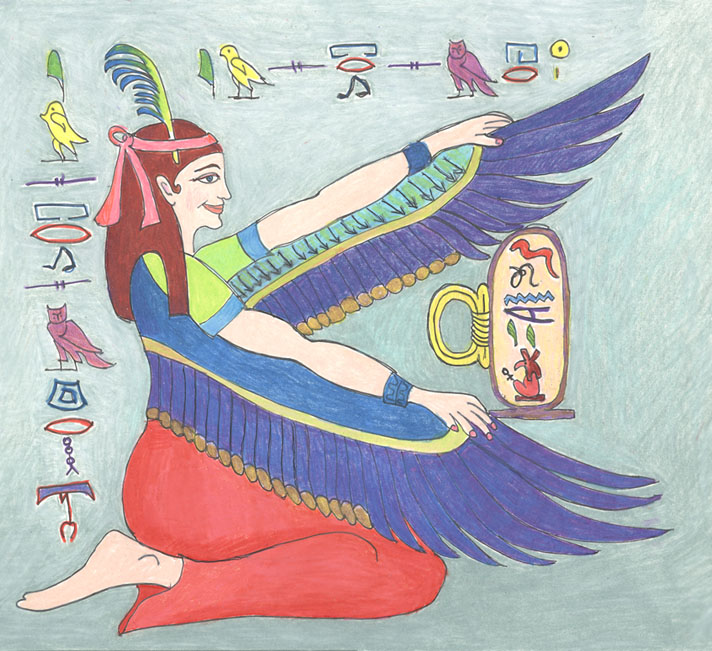
©JAL, 2008

|
"There is a fundamental notion, abstract yet vitally real, which colours all the myth, the morality and the life of the ancient Egyptians. This is Maât. Divine entities and human beings alike live by Maât, in Maât and for Maât. "This single name expresses all notions of equilibrium and poise."..."The scales,and Maât's symbol, the feather, support a plumb line at the end of which hangs the plumb bob. Maât represents therefore accuracy, honesty, fairness, faithfulness, rectitude, and in this aspect becomes the emblem of the judge, who in the late period wore a small Maât of lapis lazuli on his breast. Maât is the symbol of Justice and Truth, of authenticity, legitimacy, integrity, legality. "Maât is also the symbol of harmony, in the sense of accurate tones and perfect musical accords. In the New Kingdom (after1567 BC) harps are often decorated with a figure of Maât."
Lucie Lamy goes on to explain: |
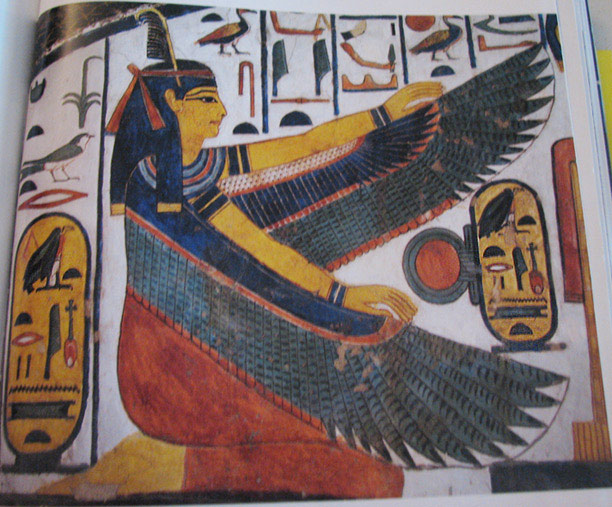
|
But I wanted to make my version more personal.
I remembered with amusement Courbet's words on copying 'the past' directly, so I did not duplicate the hands as they are in the original. Perhaps there is some additional significance to the unrealistic hand positions, I should study the symbology books more. But I didn't want her hands like that. Also, I gave her a smile, and put my own name, along with 'Beloved of Set' in the cartouche:
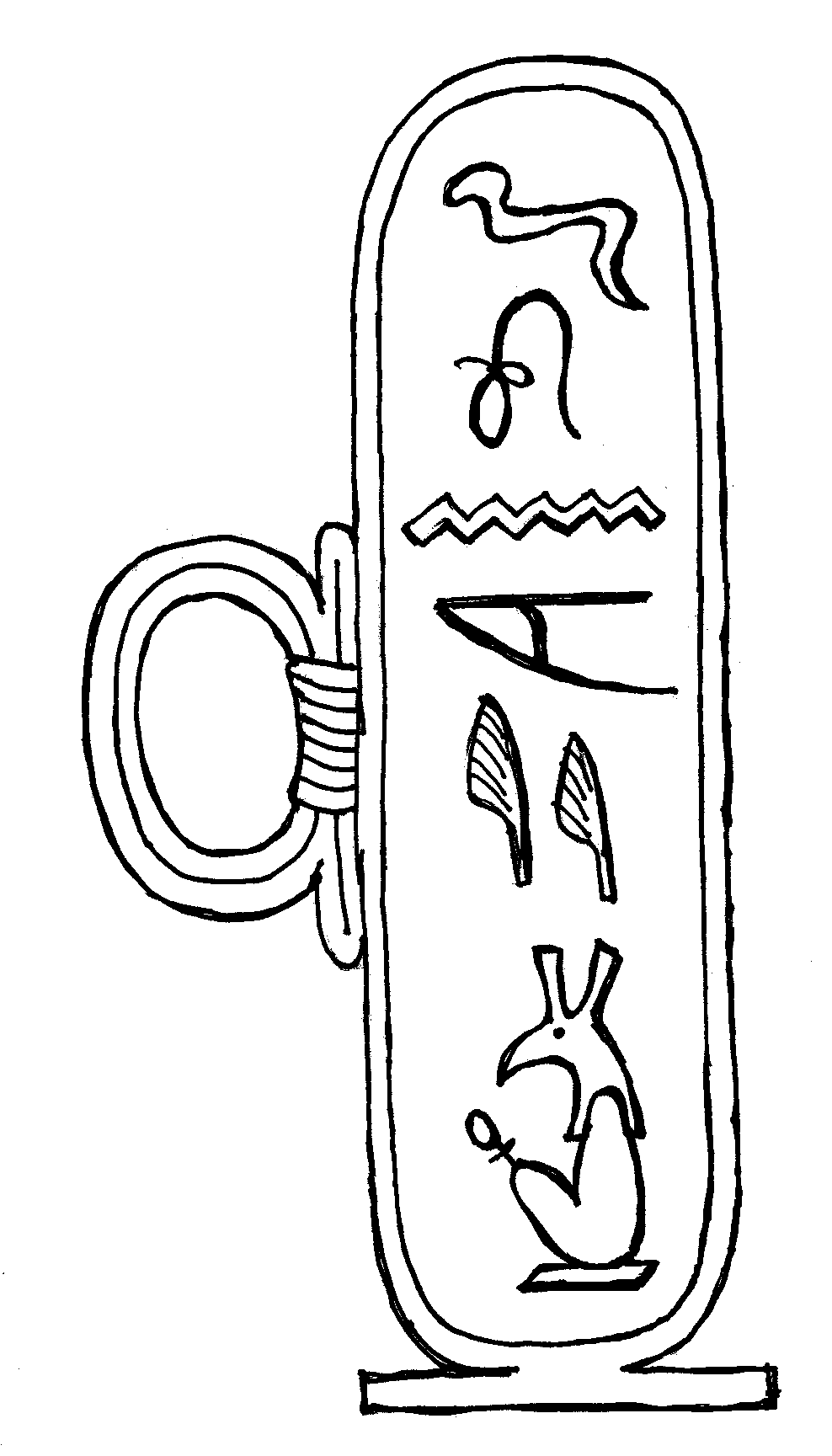
 "He shall come forth by day", from Budge's _The Egyptian Book of the Dead_
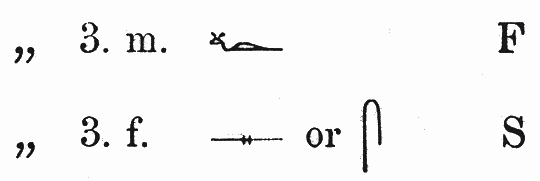 The 'viper' is masculine determinative, the 'bolt' is feminine determinative...
|
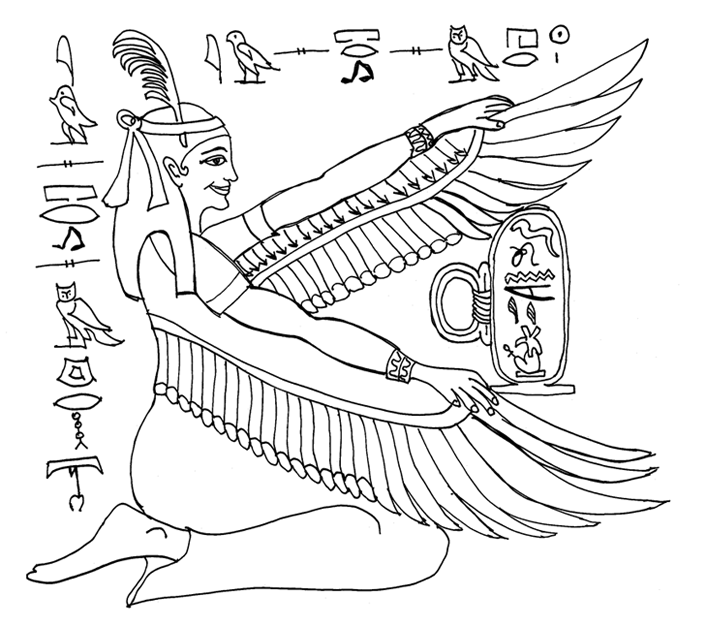
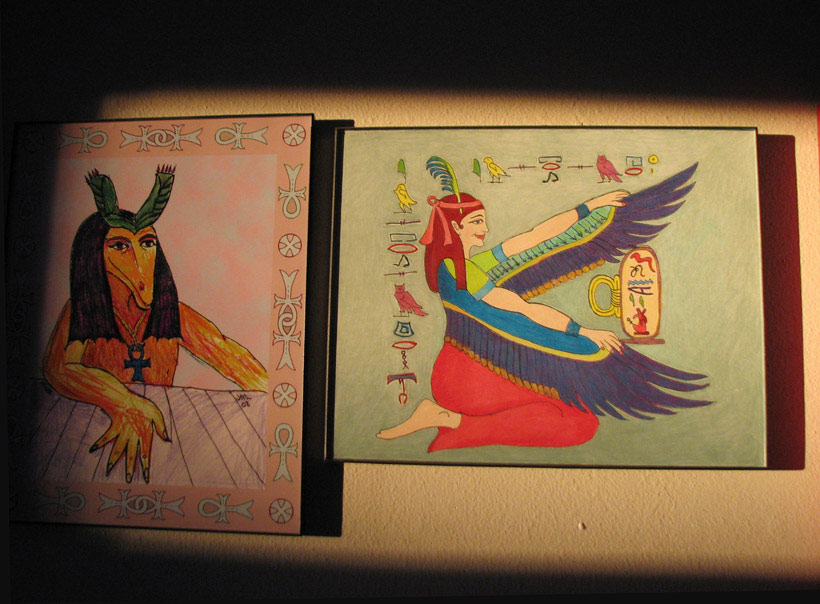
January 17, 2009
Sunlight on images of Set and Ma'at...